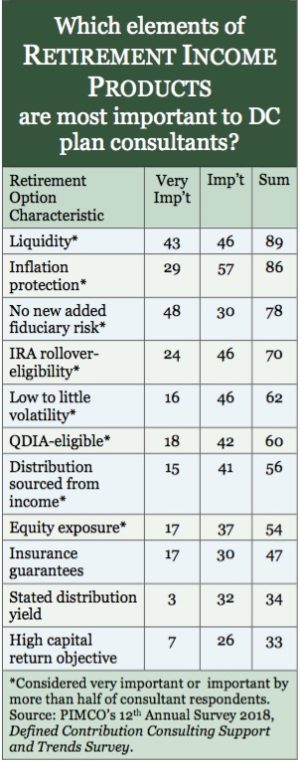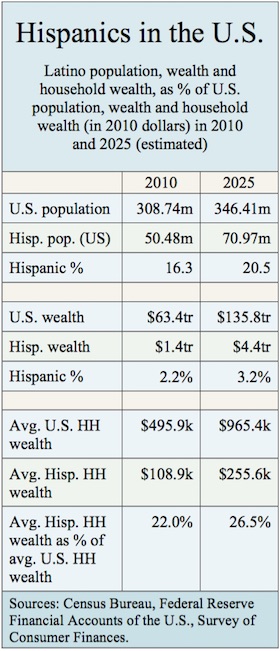Principal to repurchase more shares
Principal Financial Group’s board of directors has approved a new authorization for the repurchase of up to $300 million of the company’s outstanding common stock. As of March 31, 2018, approximately $96 million remained under the company’s May 17, 2017 $250 million authorization.
The repurchases will be made in the open market or through privately negotiated transactions, depending on market conditions. The stock repurchase program may be modified, extended or terminated at any time by the board of directors. Principal Financial Group, Inc. had approximately 286.4 million shares of common stock outstanding as of April 25, 2018, per the company’s quarterly report on Form 10-Q for the quarter ended March 31, 2018.
“This authorization supports our continued balanced approach to capital deployment to create long-term value for our shareholders – through common stock dividends, share repurchases, and strategic acquisitions,” said Dan Houston, chairman, president and CEO of Principal. “As we previously announced on our 2018 outlook call, we anticipate deploying $900 million to $1.3 billion of capital in 2018. This action reflects our continued confidence in the underlying strength of our diversified and integrated business model.”
Financial wellness is doing well: Prudential
Among the employers recently surveyed by Prudential Financial’s Workplace Solutions Group, 83% offer financial wellness programs, up from 20% in the survey two years earlier. Another 14% of employers say they plan to offer these programs in the next one or two years, the survey showed.
The survey included responses from nearly 800 decision makers for group insurance benefits at U.S. businesses with at least 100 full-time employees.
Prudential’s survey examines varying employer attitudes about financial wellness, as well as common types of financial wellness programs, top metrics of success and potential barriers to implementation:
- Employers who offer financial wellness are more satisfied with their total benefits program (61%), than those who do not (44%).
- Larger employers were more satisfied with their financial wellness offerings (72%) than medium (54%) or small employers (50%).
- Most large employers (61%) believe data sharing is employees’ biggest barrier to participation in financial wellness programs, citing “privacy concerns” and “putting together all the data and information.”
- Overall, retirement plan and benefit providers are the preferred providers of financial wellness.
- Criteria for selecting financial wellness providers are primarily driven by cost, ease of implementation and expertise.
- Employers continue to have a paternalistic view of their overall employee benefits
- Despite recent shifts in employment toward gig and other alternative work arrangements, the survey finds the majority of employers are committed to offering employee benefits.
- “Attract and retain talent, improve employee productivity, and assure employees” are the three most critical outcomes employers want their benefits strategies to achieve.
- Sixty% of employers think they should provide benefits to employees; only 15% say employees should be responsible for their own financial well-being and future.
- Almost two-thirds (64%) believe their employees are highly satisfied with their overall benefits package, up from 41% in the previous survey.
- A third of employers say they should pay all the costs of the employee benefits they offer.
According to the survey, employers primarily rely on employees to tell them what types of financial wellness programs they need and how to measure the success of the programs. Methods used include surveys and informal feedback, analysis of internal data around 401(k) loans or withdrawals, as well as wage garnishments. More than two-thirds measure the impact of their financial wellness programs at least quarterly.
Piwowar leaves SEC
SEC Commissioner Michael Piwowar plans to step down from his post on July 7, after serving nearly five years on the five-person commission, according to a statement posted on the SEC website.
Piwowar, a Republican, has been an outspoken critic of the Department of Labor’s fiduciary rule.
“To me, that rule, it was about one thing and it was about enabling trial lawyers to increase profits,” Piwowar said last year while acting SEC chairman.
And although he voted with three other commissioners to move forward on a proposal to raise standards of conduct for brokers and advisors, he expressed misgivings that the rule, particularly its length at more than 1,000 pages.
The SEC is currently taking comments on that proposal.
Piwowar’s departure will leave the agency with four commissioners, which might deadlock votes if the SEC’s two Democrats oppose measures favored by Chairman Jay Clayton, a Trump administration appointee, according to The Wall Street Journal.
“It has been an honor to serve the American people at such a respected agency and work with such dedicated and talented staff,” Piwower wrote in a resignation letter to President Trump posted on the SEC’s website. In it, he expressed gratitude for having been appointed acting SEC chairman at the beginning of Trump’s administration, noting that “we accomplished a great deal for the ‘forgotten investor’ in a short period of time.”
An email to the SEC for additional comment was referred to the statement on the SEC’s website.
As acting SEC chairman, Piwowar “made waves” the Journal said when he called for abolishing rules that prevent most households and individuals from investing in startups and other private companies, arguing that these investment opportunities should not be reserved for ventures capitalists and millionaires.
Piwowar joined the SEC in 2013 from Capitol Hill, where he served as the chief Republican economist on the Senate Banking Committee. He also worked as a White House economist earlier in his career.
As a commissioner, Piwower used procedural tactics to block some votes on Dodd-Frank rules toward the end of the Obama administration, when due to other resignations, the agency has only three members, the Journal reported.
Piwowar’s term officially ends on June 5. He will resign his position on July 7 unless his successor is sworn in before then. He did not disclose what he plans to do after leaving the SEC in either the resignation letter or the accompanying statement on the SEC website.
Prudential in $1.2 billion longevity reinsurance deal
In their sixth longevity reinsurance transaction since 2015, Prudential Insurance Company of America (PICA), is assuming the longevity risk for £900 million (about $1.2 billion) in pension liabilities of Pension Insurance Corporation plc, associated with about 7,500 retirees in two pension plans.
The announcement was made by Prudential Retirement, a unit of Prudential Financial. The two firms concluded their last longevity reinsurance agreement in November 2017. Overall, they have come to agreements collectively worth more than $6 billion (about £4.4 billion).
“This agreement signals strong demand for longevity reinsurance in the U.K., especially as a result of the growing desire among companies to de-risk their pensions,” said a press release.
“This desire has become more achievable due to the improved funding levels of U.K. schemes, many of which have spent several years progressively de-risking their liabilities. They are now well placed to do a buyout or buy-in. PIC and Prudential have long been leaders and innovators in providing de-risking solutions.”
FedEx buys $6 billion group annuity from Metlife
FedEx, the overnight package shipping giant, said this week that it wlll purchase a group annuity contract from and transfer approximately $6 billion of the company’s U.S. pension plan obligations to Metropolitan Life Insurance Company, or Metlife.
The annuity purchase will transfer responsibility for pension benefits to Metlife for about 41,000 FedEx retirees and beneficiaries who currently receive a monthly benefit from participating FedEx tax-qualified U.S. domestic pension plans, and meet other conditions.
There will be no change to the pension benefits for any plan participants as a result of the transaction. Details will be provided to retired participants and beneficiaries whose continuing payments will be fulfilled by Metropolitan Life. The transaction, which is subject to certain closing conditions, is expected to close on May 10, 2018.
“This transaction better positions FedEx to manage future pension plan costs, and retirees will receive the same pension benefit from a highly rated insurance company. Transferred pension benefits will be protected by the State Guaranty Association in the state where the retirees live.” said Alan B. Graf, Jr., executive vice president and CFO, FedEx Corp, in a press release.
By transferring these obligations to Metropolitan Life, FedEx will reduce its U.S. pension plan liabilities by approximately $6 billion. The purchase of the group annuity contract will be funded directly by assets of the Pension Plans. Following the annuity purchase and transfer, the Pension Plans will remain well funded.
As a result of the transaction, FedEx expects to recognize a one-time non-cash pension settlement charge, which will be included in the fiscal 2018 year-end mark-to-market pension accounting adjustments that will be reported in the company’s fiscal 2018 fourth quarter earnings release.
During the 2017 and 2018 fiscal years, FedEx made voluntary contributions of $4.5 billion to the Pension Plans, including the most recent contribution of $1.5 billion following the U.S. Tax Cuts and Jobs Act, which was enacted in December 2017.
Nationwide funds fintech firms
Nationwide is making a new venture capital investment in Betterview to enhance its ability to write business and service claims leveraging artificial intelligence (AI) and drone technology, the Columbus-based insurer announced this week. The investment is part of Nationwide’s commitment to finance more than $100 million of venture capital in customer-centric solutions.
With the new investment in Betterview, Nationwide’s venture capital team has made nine investments to date, including Nexar, Matic, blooom, Insurify, Next Insurance, and Sure.
“Drones and artificial intelligence will play a critical role in meeting the needs of our customers in the future of both underwriting and claims response. It’s why we’re so excited about this partnership with Betterview,” said Scott Sanchez, Nationwide’s chief innovation officer. “These capabilities will drive faster response in the wake of catastrophic events, enhanced underwriting sophistication for day-to-day business and a better overall experience for our members.”
The investment is being used to “extend Betterview’s machine learning platform across additional data sources to unlock valuable insight about commercial and residential properties for P&C insurers and reinsurers,” said a Nationwide release.
“Betterview’s machine learning platform, generates data and analytics on building and property conditions, characteristics, and potential hazards by analyzing satellite, aerial, and drone imagery. This information can be used throughout an organization, from loss control and underwriting, to claims and catastrophe response.”
In the release, Erik Ross, leader of Nationwide’s venture capital team, said, “When we first met the [Betterment] team, their sole focus was on using drones to transform how buildings and properties were inspected. They have since evolved by enhancing artificial intelligence capabilities, building a mobile app, developing a roof risk score, and integrating various third-party data providers to put historical weather, property hazard risks, and building information at the customer’s fingertips.”
© 2018 RIJ Publishing LLC. All rights reserved.













